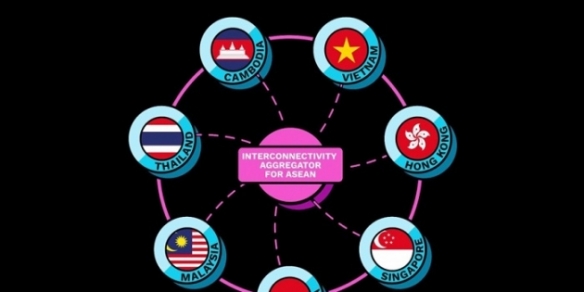Real-time bidding for online advertising makes SEA debut
By Gabey Goh September 18, 2012
- Innity slated to roll out its real-time bidding offering in South-East Asia next month
- Offering includes demand-side platform MarketOne as well as sell-side platform YIELD ONE
 ONLINE advertising in the region is set to get a technology boost, with digital media network Innity slated to launch its real-time bidding (RTB) offering in South-East Asia next month.
ONLINE advertising in the region is set to get a technology boost, with digital media network Innity slated to launch its real-time bidding (RTB) offering in South-East Asia next month.
Real-time bidding (RTB) is data-driven buying model through which ad agencies place auction-based bids for individual ad impressions.
It is an automated process of buying and selling online display advertising in real time and combines targeting algorithms and data analytics in order to deliver better targeting and greater control.
This process takes place in milliseconds, allowing agencies to adjust their strategies almost immediately based on the performance of individual sites and ad impressions.
In June of this year, Innity announced an alliance with D.A. Consortium Inc. (DAC), to offer demand-side platform (DSP) MarketOne as well as sell-side platform (SSP) YIELD ONE services to its advertisers and publishers to increase the effectiveness of display campaigns.
On the partnership, DAC president and chief executive officer Hirotake Yajima said: "We are confident that the RTB market will be the next frontier for advertisers. By combining the strength of both companies, we aim to secure the leading position in the RTB market across the region."
"We're excited to be one of the first few companies to introduce RTB in South East-Asia and believer that believe that our exhaustive ad network, combined with our partnership with DAC, will result in substantial growth of the ad market in Asia Pacific," said Innity chief executive officer Phang Chee Leong (pic).
Phang added Innity’s systems were already RTB-enabled and currently the undergoing integration with websites under its network, with Singapore and Malaysia the first two markets due to finish the testing phase in time for an official launch slated for October.
“RTB has taken time to be established in South-East Asia largely due to the fact that very few have the expertise to use the platform effectively,” said Phang, adding that advertising exchange platforms have been in use by markets such as the United States since 2007 but the concept was still very new in Asia.
“One advantage of being a late adopter is not dealing with legacy issues to upgrade an existing ad exchange platform which includes RTB,” he added.
The spotlight on such ad exchange platforms has been heating up this year with Facebook rolling out its own real-time advertising exchange – Facebook Ad Exchange (FBX) – recently to allow targeting of users based on their immediate web-browsing habits, or linked to current events, such as sports results.
According to research outfit eMarketer, RTB is projected to be 20% of all web display advertising this year, providing more than three trillion impressions monthly, and roughly US$2 billion in revenue to publishers.
Market Reaction
 Describing it as “media buying 2.0”, Phang said that the feasibility of deploying such systems has dramatically increased thanks to advancements in cloud computing and big data processing.
Describing it as “media buying 2.0”, Phang said that the feasibility of deploying such systems has dramatically increased thanks to advancements in cloud computing and big data processing.
“Ad buy considerations for marketers have traditionally leaned towards the creative side, such as brand associations and content, but not so much the mathematics behind it; now that part has kicked in, made more accessible by advancements in big data,” said Phang.
Typically, companies looking to buy and place online ads on a large scale purchased blocks of ads, usually in groups of 1,000, through ad networks.
Agencies pay these ad networks a cost per mille (CPM)-based rate to reach audience segments with the understanding that a portion of the online ads will not reach intended consumer targets.
Phang said that despite online advertising accounting for less than 5% of total ad expenditure in Malaysia, it is enjoying healthy growth. According to Nielsen Malaysia, in 2011, the country's advertising expenditure totalled RM10.76bil (US$3.53 billion).
“It’s less of a fight now convincing marketers to believe in the benefits of online advertising. It still can’t compete with traditional mediums which still command the lion’s share of adspend, but more marketers are becoming positive about online and spending is growing. It is only a matter of time,” he said.
According to Phang, the response for RTB in Malaysia has been very positive from agencies and marketers, especially agencies well versed in search engine marketing as it entails similar concepts. “But the data they deal with is more contextual in the form of keyword buys,” he said.
Client-side marketers especially welcomed the transparency which comes with using an RTB system for online ad buys.
“They know their products best and with the added intelligence and information provided by this new system, they can fully make use of the knowledge gained in their decision-making,” said Phang.
“For marketers, it’s no longer about whether or not to buy, it is about how much to buy based on considerations such as budget and campaign duration and goals, maximising their budgets,” he said.
Innity plans to officially launch MarketOne and YIELD ONE in Malaysia, Singapore, Indonesia, Thailand, Vietnam, Philippines and Hong Kong before eventually expanding to the whole Asean region.
Room for more
Phang admitted that many publishers in the market remained wary over the implementation of the RTD system, citing a mixed response to date.
“Many don’t know how to handle this change and feel that most of the advantages are skewed towards the advertisers,” said Phang.
“However we intend to ramp up our efforts in reaching out to them and educating the market on the advantages RTD brings to publishers and reassure them that it would not cannibalize existing sales models,” he added.
Phang said that he felt the publisher population in Malaysia was “a bit low” especially when compared to other markets such as Vietnam where online publishers number in the thousands with new sites being created frequently. Innity currently has over 100,000 websites in its SEA network, with 600 websites from Malaysia.
“In Malaysia, growth in terms of websites appears to be cyclical where it reaches a certain saturation point and stagnates until the next growth cycle,” he said.
He also suggested another possible factor, that venture capitalists and investors were more open to and aggressive in funding such ventures in other markets as compared to Malaysia.


